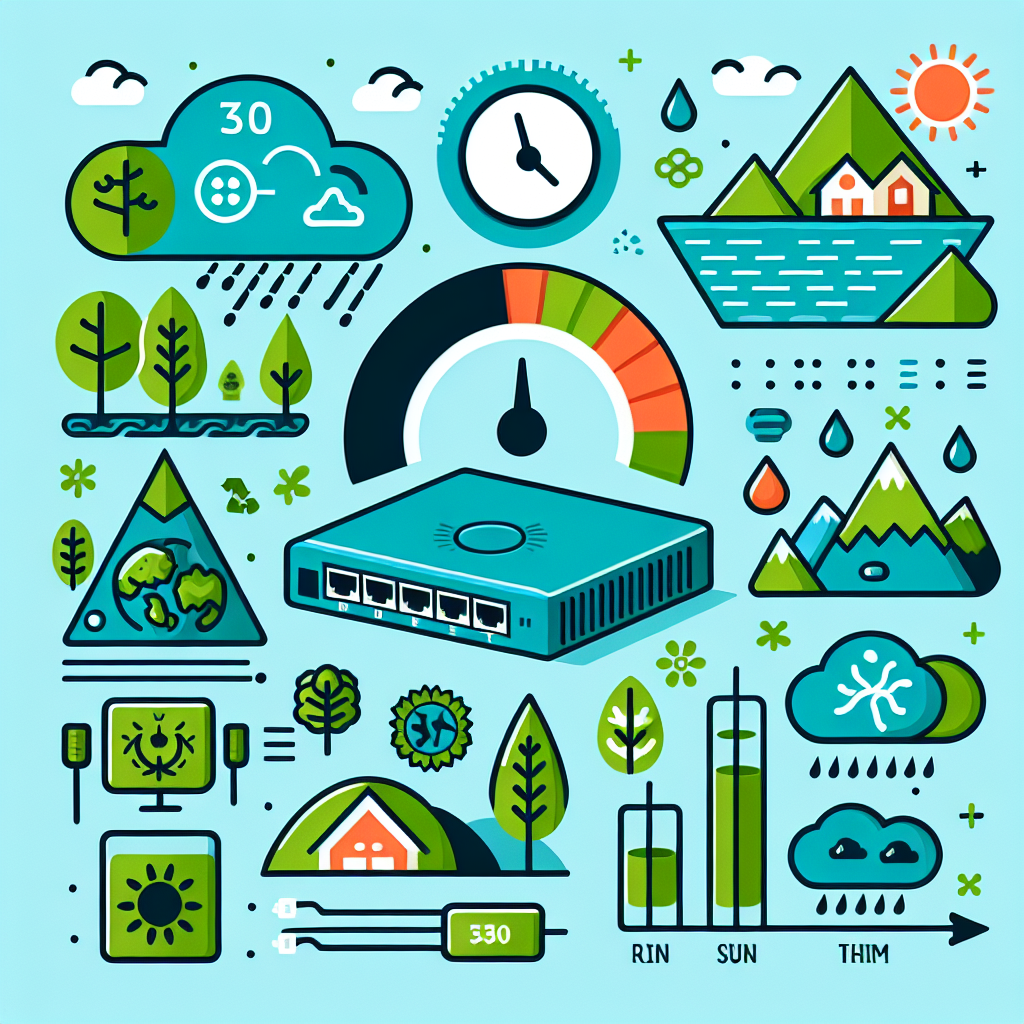Introduction
The significance of environmental monitoring can barely be overstated in a world grappling with climate change, pollution, and natural disasters. A critical aspect of this monitoring is ensuring that the network adapter used in these systems is optimized for reliable and accurate data transmission. This article delves into how you can efficiently optimize a network adapter specifically for environmental monitoring.
Importance of Network Adapter Optimization
Network adapters serve as a vital bridge between monitoring devices and data collection centers. Optimizing these adapters ensures data integrity, timely updates, and long-lasting performance, which are crucial for accurate environmental monitoring.
Common Network Adapter Challenges
Before diving into optimization techniques, it’s essential to understand the common challenges faced by network adapters used in environmental monitoring:
- Interference: Environmental factors can cause signal interference, leading to data loss.
- Bandwidth Limitation: High data volume can strain the network, reducing performance.
- Power Consumption: High power usage can limit the operational lifespan of monitoring devices.
- Security Risks: Monitoring networks are susceptible to cyber threats.
Key Strategies for Network Adapter Optimization
Select the Right Network Adapter
Choosing the right network adapter is vital for effective environmental monitoring. Look for the following features:
- Compatibility: Ensure that the adapter is compatible with your monitoring devices.
- High Data Rate: Opt for adapters that offer high data transfer rates to handle large data volumes.
- Low Power Consumption: Adapters with energy-saving features are ideal for prolonged monitoring.
- Robust Security: Integrated security features to protect data from unauthorized access.
Optimize Data Transmission
Efficient data transmission is crucial for accurate environmental monitoring. Implement the following strategies:
- Use Quality of Service (QoS): Prioritize essential data packets to ensure timely transmission.
- Use Data Compression: Compress data to reduce bandwidth usage without compromising quality.
- Implement Error Detection and Correction: Use protocols like CRC to ensure data integrity.
- Leverage Multiple Channels: Utilize multiple communication channels to minimize data loss due to interference.
Improve Connectivity
Reliable connectivity is a cornerstone of effective environmental monitoring:
- Infrared and WiFi: Use these technologies for short-range, high-speed data transfer.
- 5G and LTE: For long-range communication, opt for these advanced cellular technologies.
- Signal Boosters: Use signal boosters to enhance connectivity in remote areas.
Power Management
Effective power management extends the lifespan of monitoring devices:
- Energy Harvesting: Implement solar or wind energy solutions to power network adapters.
- Sleep Mode: Use adapters with smart sleep mode to conserve power when not in use.
- Battery Management: Regularly check and replace batteries to ensure uninterrupted monitoring.
Implement Robust Security Measures
Security is paramount in environmental monitoring:
- Encryption: Use end-to-end encryption to secure data during transmission.
- Authentication: Implement strong authentication protocols to prevent unauthorized access.
- Firewall: Use firewalls to protect against cyber threats.
- Regular Updates: Keep firmware and software up to date to fix vulnerabilities.
Conclusion
Optimizing a network adapter for environmental monitoring involves selecting the right adapter, optimizing data transmission, improving connectivity, managing power efficiently, and implementing robust security measures. By following these strategies, you can ensure reliable and accurate environmental monitoring, which is essential for addressing today’s environmental challenges.
| Optimization Aspect | Key Strategies |
|---|---|
| Network Adapter Selection | Compatibility, High Data Rate, Low Power Consumption, Robust Security |
| Data Transmission | QoS, Data Compression, Error Detection and Correction, Multiple Channels |
| Connectivity | Infrared/WiFi, 5G/LTE, Signal Boosters |
| Power Management | Energy Harvesting, Sleep Mode, Battery Management |
| Security | Encryption, Authentication, Firewall, Regular Updates |

